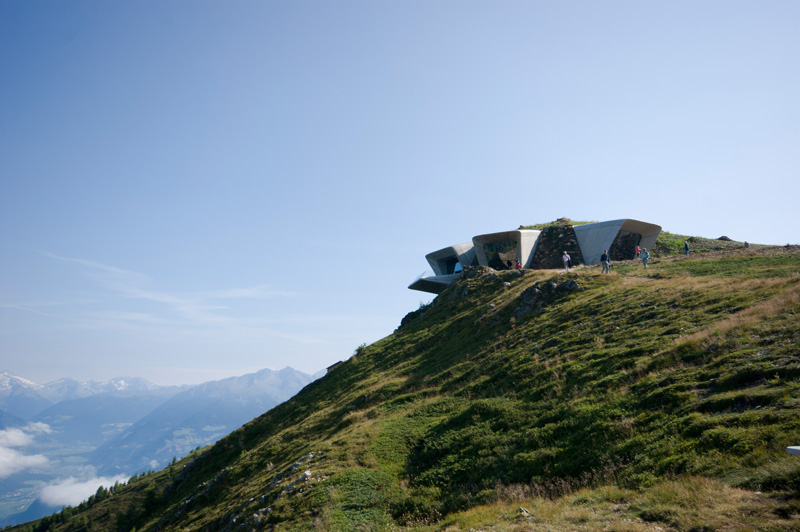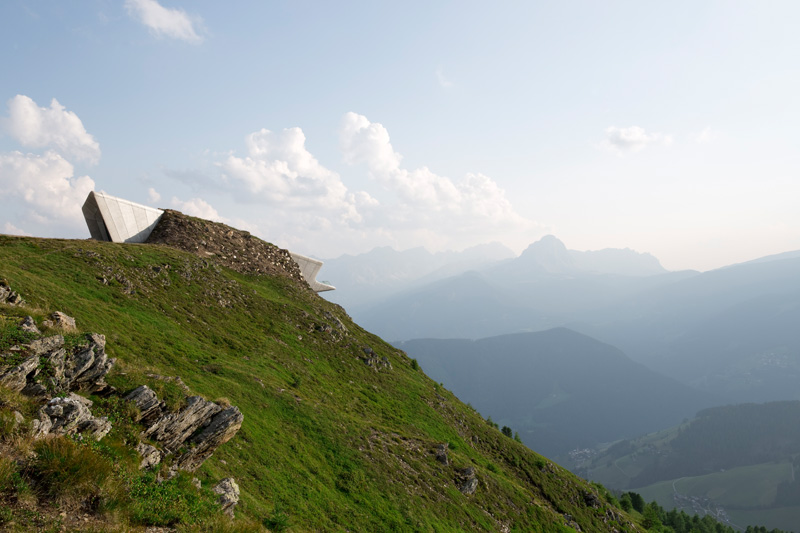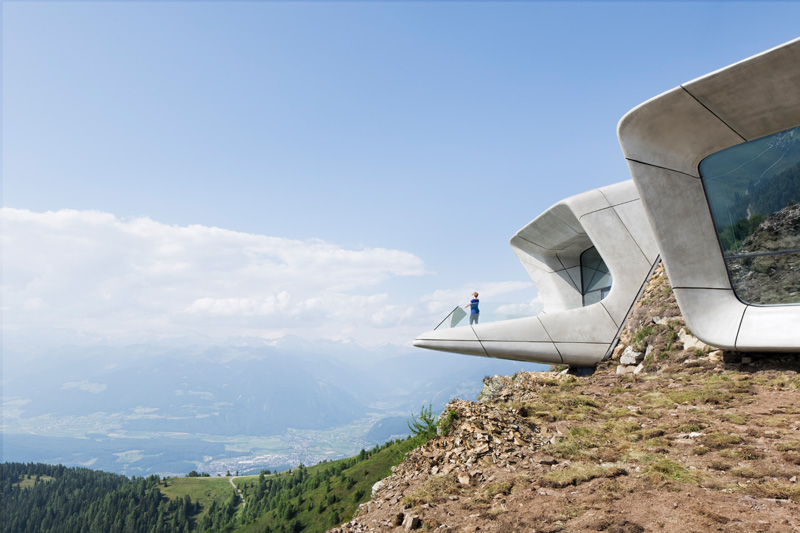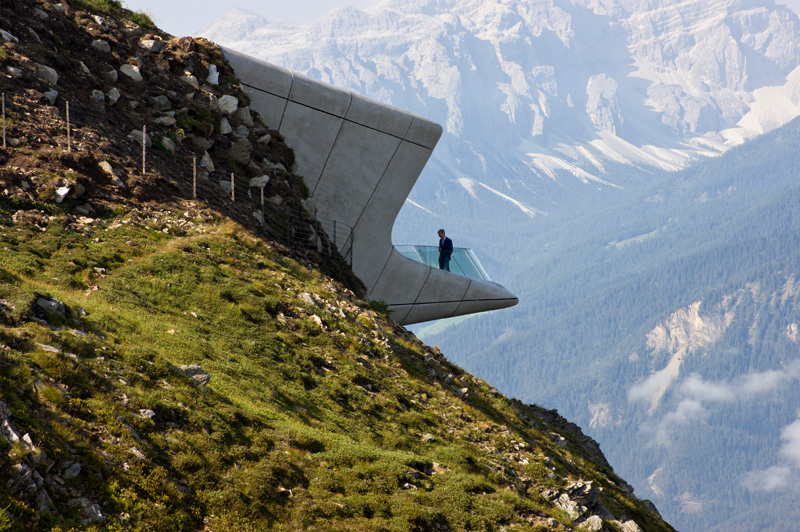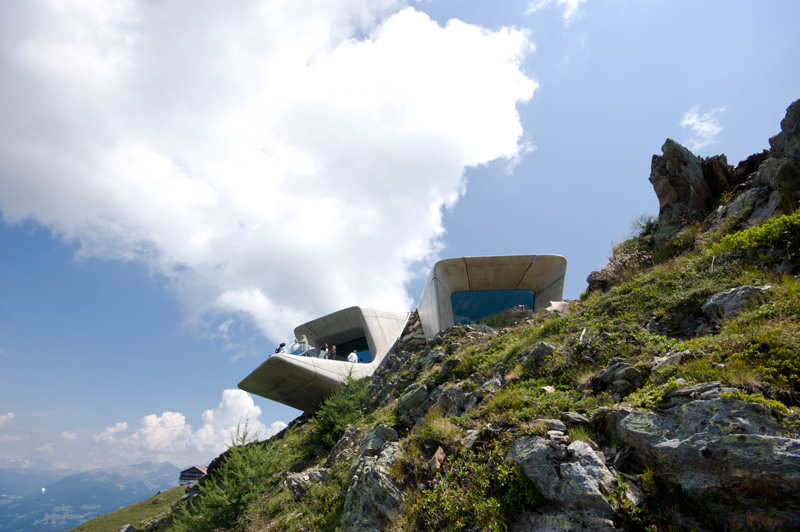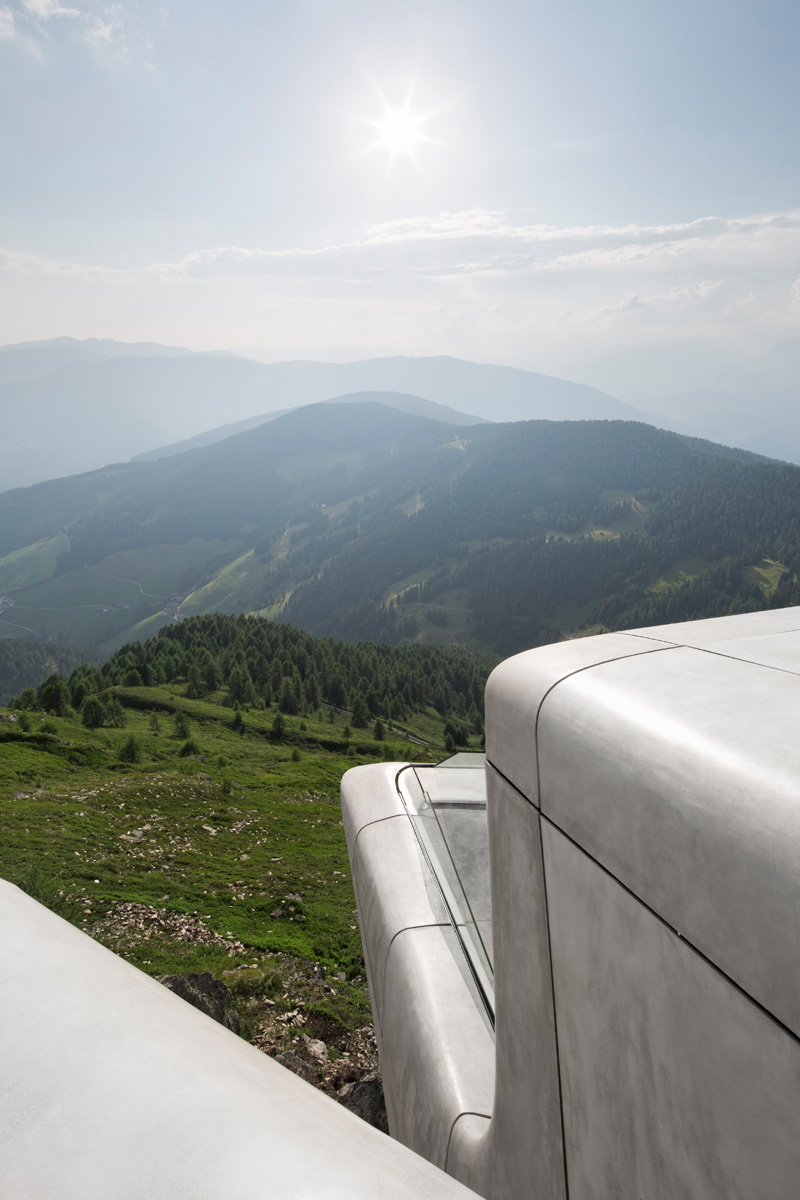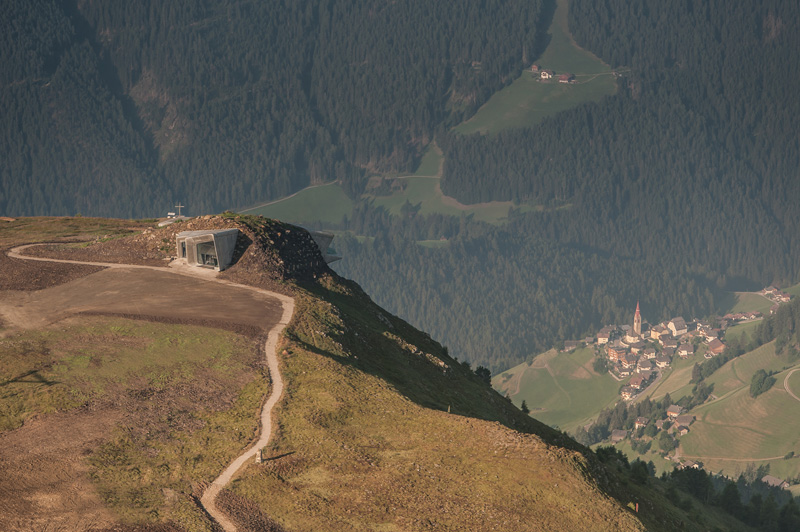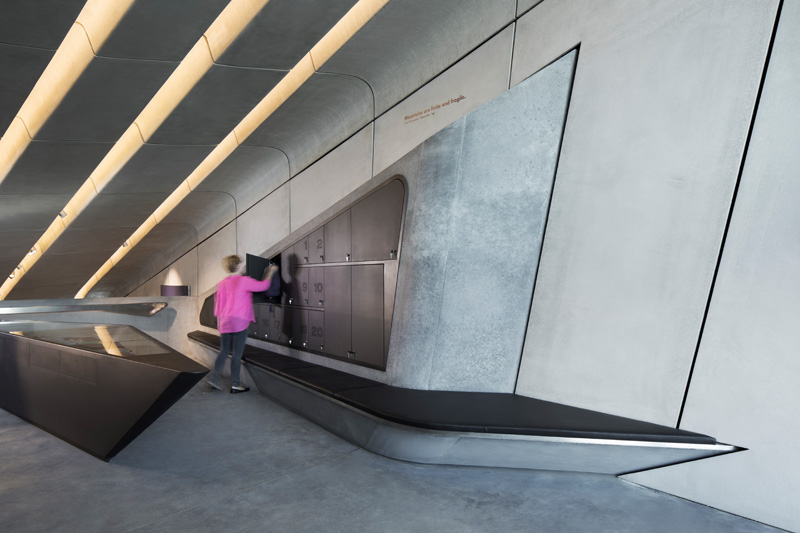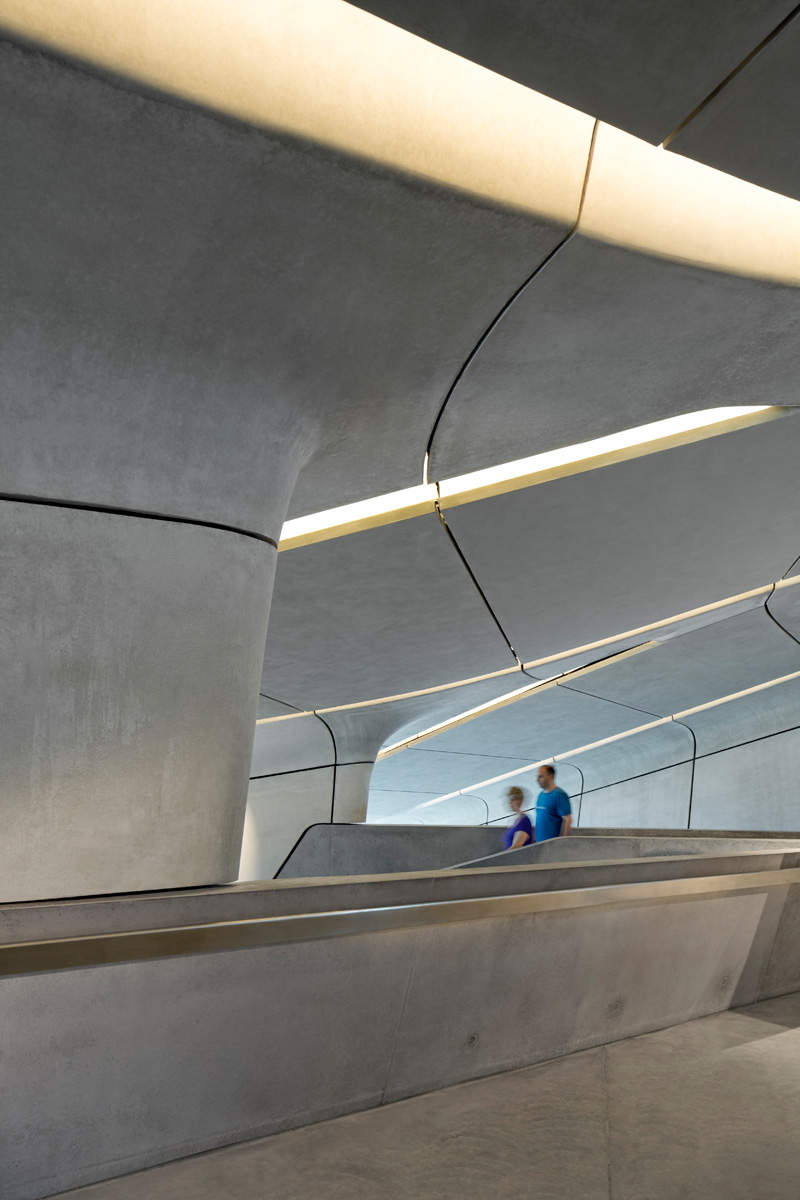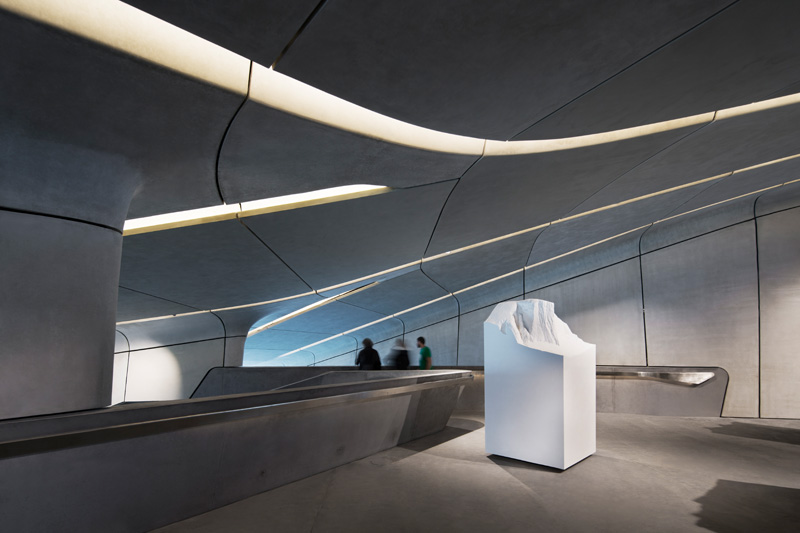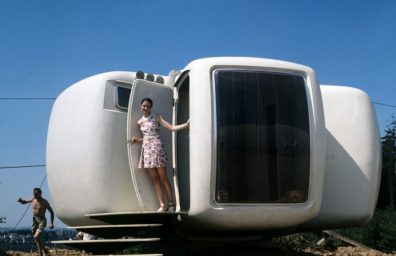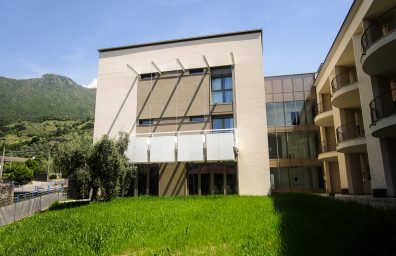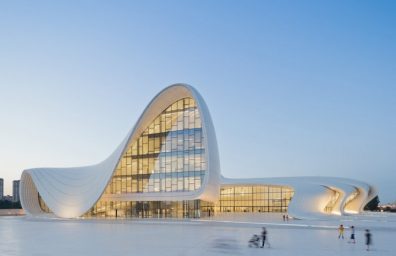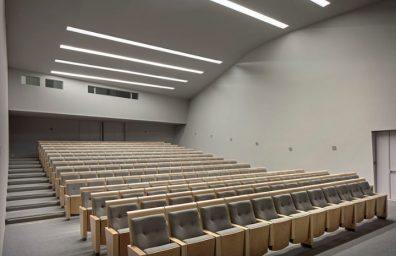Recently completed in South Tyrol the Messner Mountain Museum Corones, designed by Zaha Hadid Architects.
Embedded within the summit of Mount Plan de Corones, 2.275m above sea level in the center of South Tyrol's most popular ski resort, the Messner Mountain Museum Corones is surrounded by the alpine peaks of the Zillertal, Ortler and Dolomites.
Founded by the famous climber Reinhold Messner, the sixth and last Messner Mountain Museum explores the tradition, history and discipline of mountaineering.
Messner, the first person to climb all 14 mountains of more than 8.000 meters in the world and the first to climb Everest without the aid of oxygen cylinders, recounts his vision for the MMM Corones: "Kronplatz offers a view beyond the borders of South Tyrol to all cardinal points: from the Lienz Dolomites, east of the Ortler in the west, from the Marmolada glacier in the south to the Zillertal Alps, in the north. The museum is a mirror of the world of my childhood. The Odle, the central buttress of the Heiligkreuzkofel (the most difficult climb in my entire life) and the glaciers of the granite mountains of the Ahrntal Valley "Messner continues," On Kronplatz I present the development of modern mountaineering and 250 years of progress in terms of 'equipment. I speak of triumphs and tragedies on the most famous peaks in the world - the Matterhorn, Cerro Torre, K2, and shed light on mountaineering with the help of relics, thoughts, works of art and reflecting the mountain backdrop outside the inside of MMM Corones. "
Zaha Hadid explains the concept of the project: “The idea is that visitors can descend into the mountain to explore its caverns and grottos, before emerging through the mountain wall on the opposite side, onto the terrace overlooking the valley. well below the spectacular panoramic views “. In 2003, the Concordia 2000 Peace Bell was the first cultural installation to combine sports and recreational facilities at the summit of the Kronplatz mountain, which include hang gliding and paragliding facilities, the Kron and Gipfel Restaurants, a replica of a native settlement Americans, as well as the top stations of the Kronplatz 2000 cable car at Riscone / Riscone, the cable car in Valdaora Valdaora, and the Ruis cable car in San Vigilio. The Mountain Museum will welcome visitors throughout the year to explore Messner's world where humanity has reached its limit, adding an additional cultural and educational institution to Monte Plan de Corones. Reinhold Messner's vision for an underground museum on the summit of Mount Plan de Corones indicated three very specific locations in which the museum should have emerged from the ground: “The first, a window facing southwest to the summit of Mount Peitlerkofel , the second, another window that was to look south towards the Heiligkreuzkofel peak, the third, a balcony was to face west towards the Ortles and Alto Adige. "
Reflecting the lighter colors and tones of the jagged limestone peaks of the Dolomites, the exterior panels are formed from a lighter shade of fiberglass reinforced concrete and crease within the museum to respond to the darker interior panels which have the luster and the anthracite coloring found deep beneath the surface.
A series of stairs, like waterfalls in a mountain stream, cross the museum to connect the exhibition spaces and define the movement of visitors on the three levels. At the lowest level, visitors pass the viewing windows, and through the galleries emerge onto the terrace which projects 6m from the mountain offering a 240 degree panorama of the Alps. The museum is laid out on multiple levels to reduce its footprint. During construction, 4.000 cubic meters of earth and rock were excavated and then placed on and around the structure once completed - immersing the museum within Monte Plan de Corones and helping to maintain a more constant internal temperature. The large windows allow natural light to penetrate deep inside the museum, drawing visitors forward through the panoramic windows.
Constructed of reinforced concrete made in-situ, the museum structure has walls between 40-50cm, while the roof supporting the earth and rock that incorporates the museum into the mountain, also reaches 70cm thick. Most of the museum's exterior and interior panels are made of cast-in-place concrete, with a conical-surface formwork used to process the peaks and shoulders of the exterior panels. Nearly 400 interior and exterior panels with the most intricate curved elements were prefabricated using sculpted molds from CNC-machined foam using the architect's 3D model.
